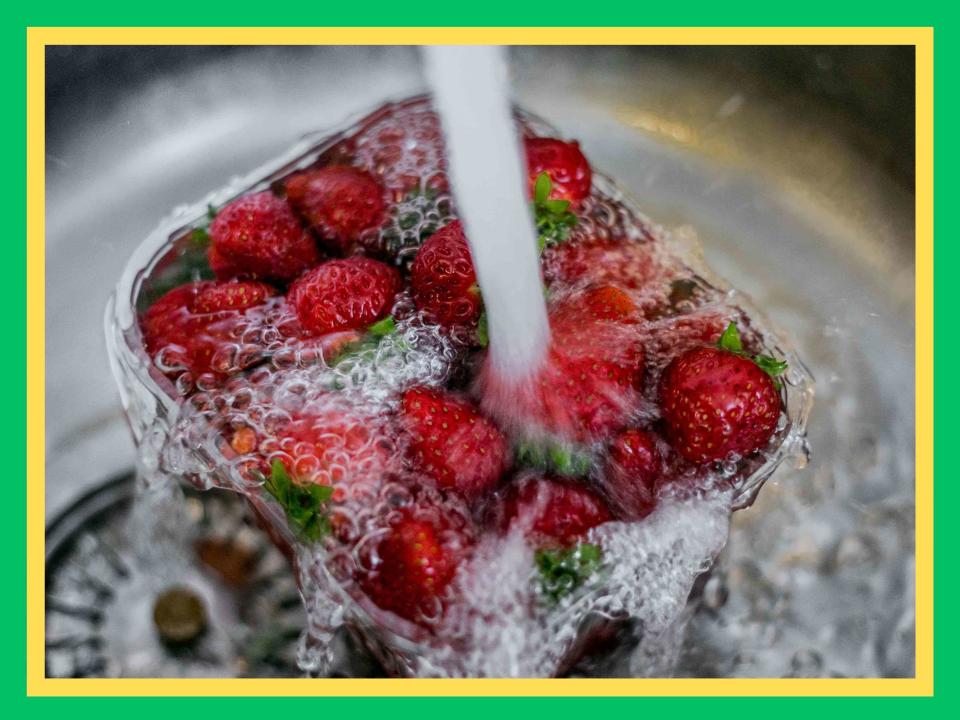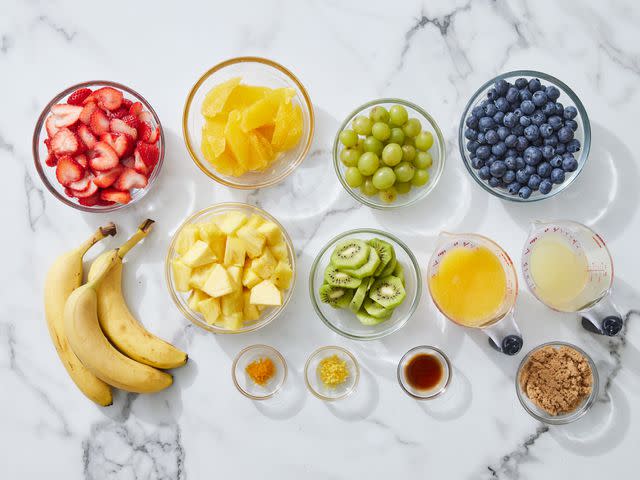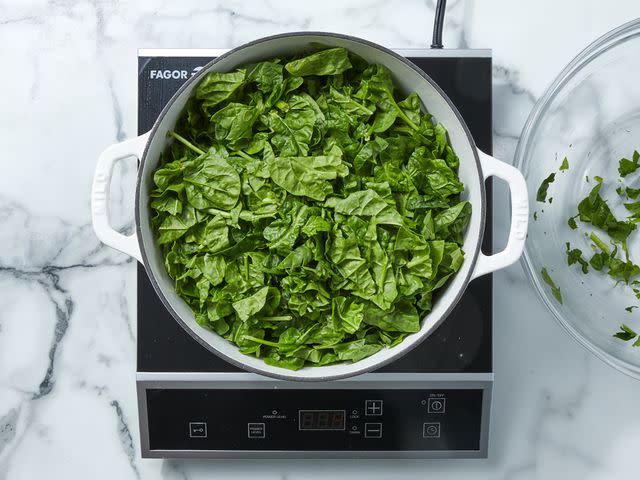How to Wash Your Fruits and Veggies So They Actually Get Clean
Is rinsing enough? Here's what you need to know.

Carol Yepes/Getty Images
Whether you’ve loaded your cart with a bunch of fruits and veggies at the grocery store, filled your tote bags with local produce at the farmers’ market, or plucked a ripe pepper or tomato from your own garden, your next step (before cooking and eating, of course) is cleaning it. So how do you clean fruits and vegetables to make them safe to eat? And when is the best time to wash them? Here’s everything you need to know so you can get right to enjoying fresh produce at every meal.
Why Should You Wash Fruits and Vegetables?
Fruits and vegetables may have pesticide residue or a waxy coating that is sometimes added to maintain freshness. They can also contain some dirt and grit (both visible and not-so-visible) that you’ll want to remove before eating.
Produce passes through several different environments before it’s in your hands, so cleaning covers your bases there as well.

Dotdash Meredith Food Studios
When to Wash Fruits and Vegetables
In general, it’s easiest and best to wash fruits and vegetables right before you use them. Delicate greens and fresh berries can spoil faster if stored with additional moisture. Other fruits and vegetables can have a waxy coating that will help maintain freshness until you’re ready to eat them.
If you like the convenience of already washed produce (like grapes you can munch on right from the fridge), dry it well after washing before placing it back in your fridge.
How to Clean Fruits and Vegetables
Unless there is lots of visible dirt or grit on your produce, a good rinse under cold water is usually enough to clean it. This will remove most residues, which are still perfectly safe in trace amounts if consumed. There are a few fruits and veggies that call for a little more care. Here’s how to clean them:
Leeks: Trim and slice, then place in a bowl of cold water and swish. Scoop them out with your hands (since turning into a colander would pour the grit right over the leeks).
Raspberries and blackberries: Gently rinse in a colander, then gently spread on paper towels and blot dry. Do this right before eating.
Delicate greens and herbs: Rinse and drain well in a colander (if gritty, follow the same method as the leeks). Dry in a salad spinner or spread in a single layer on paper towels.
Mushrooms: Rub individually under running water to remove dirt, then wipe clean with a paper towel.

Dotdash Meredith Food Studios
What Is a Vinegar Wash?
Washing fresh fruits and vegetables in a vinegar solution keeps certain molds from growing, which can increase their shelf life. To make the vinegar solution, mix one part white vinegar and two to three parts water in a large bowl. Add the produce and let it sit for 10 minutes, then drain. This should help keep mold and bacteria away for a little longer without adding any sour flavor to your produce.
What Is a Baking Soda Wash?
A baking soda wash helps give a deeper surface clean by lifting away dirt, traces of pesticides, and more. It’s a good backup for the vinegar solution if you don’t have vinegar on hand or want to avoid any potential sour flavor. To make the baking soda solution, mix one teaspoon of baking soda with four cups of water in a large bowl. Add produce and let sit for 5 minutes, then drain, rinse, and pat dry. Keep a carton of baking soda on hand for many of your kitchen cleaning needs.
Is Produce Wash Worth Buying?
Some bottled produce washes use organic ingredients like natural oils and glycerin; others are essentially vinegar solutions. Because a thorough rinse in water is usually all that’s needed and a vinegar solution is far less expensive to make at home, you can skip bottled produce wash.
Read the original article on All Recipes.


